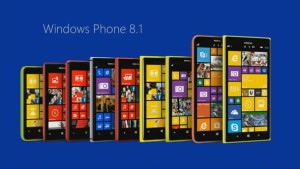Microsoft Virtual Academy: C# / XAML
Table of Contents
Programmers use C# to create Windows applications, web services, database tools, components, controls, and more. XAML is a markup language that facilitates the creation of user interfaces in a .NET Framework application. Application development is something which is constantly moving forward and expanding. Newer technologies are always being created and released, based on languages like C# and XAML. This is why Microsoft Virtual Academy (MVA) hosts a section devoted entirely to app development.
Courses on C# and XAML have been available on MVA since early 2012, and more courses have been added periodically. There are 30 different courses which students can enroll in, and they vary in spoken language and level of expertise needed to take the course.
The courses in MVA’s C# / XAML section cover a variety of topics. From software development fundamentals, through designing a XAML user interface with Blend, to courses on advanced Windows Store application development using C#.
The top courses on C# / XAML are: Programming Kinect for Windows v2 Jump Start, Quick Start Challenge: Microsoft Advertising SDK, C# Fundamentals for Absolute Beginners, and JavaScript Fundamentals for Absolute Beginners.
Course Review: Programming in C# Jump Start
One of the most popular courses in the section is Programming in C# Jump Start, instructed by Jerry Nixon and Daren May. This course is, first and foremost, a prep course for those who about to sit for their 70-483 exam, which is a part of the Microsoft Certified Solutions Developer: Windows Store Apps certification. Second, this course is made for experienced C# developers, who are looking to brush up on C#’s core concepts and features.
The topics covered in this course are:
-
Object Oriented Programming, Managed Languages and C#
- Constructing Complex Types; Object Interfaces and Inheritance
- Controlling Programmatic Flow; Manipulating Types and Strings
- Code Reflection and Information; Working with Garbage Collection
- Advanced C#, Type and Value Validation; Encryption Techniques
- Splitting Assemblies and WinMD; Diagnostics and Instrumentation
- Interacting with the File System; Leveraging Web Services
- Using LINQ to Objects and XML; Fundamentals of Serialization
- Recommended Resources & Next Steps for C#
There are no prerequisites for enrolling in this course, but it was given a Level 200 status, meaning that it is aimed at developers who already have some experience. The course is worth 38 points, and an additional 15 bonus points are given upon completion. This course has eight modules, which include the course’s slides in them.
This is a long course, spanning about 10 hours of video and slides. It has been given a 5 out of 5 star rating, by the hundreds of users who have rated it.
Nixon is a Developer Evangelist for Microsoft, with a focus on Windows and Windows Phone. Nixon has extensive experience with C#, and is a blogger, teacher, and public speaker.
May is President, co-founder, and CEO of Crank211, a company which provides solutions in the fields of Windows application development, mobile application development, user experience design, and modern web design.
Course Review: Building Apps for Windows Phone 8.1 Jump Start
Another very popular course is Building Apps for Windows Phone 8.1 Jump Start, instructed by Andy Wigley and Matthias Shapiro. This course is a Level 200 course, meant for app developers seeking to create Windows Phone applications. It focuses on app creation in Visual Studio, as well as creation of universal app projects which can fit both Windows and Windows Phone.
This course is chock full of tips and tricks on maximizing app compatibility and optimizing its code. It instructs users on the best way to program Windows Runtime APIs that are available to both Windows Store apps and to Windows Silverlight apps. The course even comes with code samples.
The topics covered in this course are:
- Introducing the Windows Phone 8.1 App Development Platform
- Getting Started Building Windows Runtime Apps
- Page Navigation and Data Binding in Windows Runtime Apps
- Lists and Lists Items in Windows Runtime Apps
- Programming Page Controls and Page Transitions Animations
- Adapting UI for Different Screens and Orientations
- Runtime App Lifecycle
- Localization and Globalization in Windows Runtime Apps
- Data Storage, Backup, and Roaming
- Sharing Files and Data in Windows Phone 8.1
- Tasks and Multitasking
- Geolocation, and Geofencing
- Networking, Mobile Services, and Authentication
- Tiles, Notifications, and Action Center
- Sensors and Proximity: NFC and Bluetooth
- Interacting with User Data: Contacts and Appointments
- Camera, Media, and Audio in Windows Phone 8.1
- Windows Phone 8.1 for the Enterprise Developer
- Programming SQLite on Windows Phone 8.1
- Tooling and Diagnostics
- App Packaging, Monetization, and Publication
- Apps for Windows
- Silverlight apps on Windows Phone 8.1
- Recommended Resources & Next Steps
There are no prerequisites for enrolling in this course, but it is categorized as a Level 200. It is worth a whopping 208 point, runs 17 hours long, includes 25 modules, 23 assessment examinations, and is rated 5 out of 5 stars.
Wigley is a Microsoft Technical Evangelist in the UK. He has been developing for mobile for over a decade, with a focus on WAP, ASP.NET Mobile Controls, Windows Mobile, and Windows Phone. He is also an author, teacher, public speaker, blogger, and presenter.
Shapiro is a Program Manager at Microsoft, a Windows Phone Developer and Evangelist. He is a long-time XAML developer, and a self-proclaimed Windows Phone Demo-Writer and Noise-Maker through blog and twitter.
Using the newest and most advanced technologies, app developers are making this world closer and more convenient than ever. The MVA’s C# / XAML courses teach professionals how to develop apps for a range of scenarios, from the enterprise to Windows Store apps for consumers.




No comments yet.